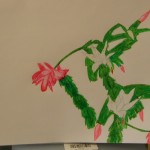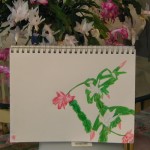DIVERSITY TRAINING 3: GARDNER’S MULTIPLE INTELLIGENCES MODEL
MULTIPLE INTELLIGENCES: MANY WAYS TO LEARN AND PERFORM
Howard Gardner’s theory of Multiple Intelligences provides another rubric for recognizing the differing gifts and talents of each student and each worker, including observation of student learning preferences from the earliest age. Gardner, of Harvard University, has argued persuasively for different kinds of intelligences other than the academic intelligence usually valued in schools. His Project Zero (www.pzweb.harvard.edu ) actively applies and researches the model in actual schools.
Gardner (Frames of Mind , 1985) defines seven “intelligences:”
linguistic
logical-mathematical
musical
bodily-kinesthetic
spatial
interpersonal
intrapersonal.
The traditional learning environment, especially beginning in fourth grade, when reading and writing become the major modality of teaching and learning, greatly favors those students who learn through linguistic and logical-mathematical intelligences. Children whose major learning modality is musical, spatial, and/or bodily-kinesthetic languish in such classrooms.The very gregarious child specializing in interpersonal intelligence is also wasting time, sitting quietly working alone. The strongly intrapersonal, introspective child is also not given opportunity to develop his or her special skills.
In a “multiple intelligences” classroom, students are exposed to learning opportunities through all the different “intelligences.” Different stations in the classroom approach a topic through the various modalities. Students learning through movement, music, artistic creation, interpersonal teamwork, as well as language and mathematics. They are graded on skits, portfolios, peer ratings as well as traditional test scores. They are stretched to develop all of Gardner’s “intelligences” as well as being allowed to develop their natural propensities toward certain of the “intelligences.
Like the MBTI and Keirsey Temperament Sorter, Gardner’s model can be especially helpful in giving a positive definition, and teaching methods, for the active, hands-on learning style of children called ADHD. Click here to read Dr. McGuire’s article “Don’t Fight ‘Em, Join ‘Em: Community-Wide Intervention for ADHD, School Failure, and Juvenile Delinquency:
http://cefocusing.com/pdf/2F2fDontFightThemJoinThemCommunityPlanforADHD.pdf
The multi-modality learning presentation can be extended into the college classroom and into presentations in the workplace. Everyone responds better when they are approached through music, art, movement, interperpersonal and intrapersonal modalities, as well as traditional language, logic, and math.Although preferred “intelligences” are best discovered through observation of an individual’s choices of modalities over time, an informal online paper-and-pencil measure can give you an idea of your own preferences:
http://surfaquarium.com (free test; lots of information; consulting)
www.thomasarmstrong.com/multiple_intelligences.htm ( many books applying MI in schools)
www.pzweb.harvard.edu (Gardner’s school-based programs and research)
All Kinds Of Minds: A Niche For Each Student, Each Person
“The problem is not a lack of intelligence but a learning style that doesn’t fit the assignment.” Out of his experience as a pediatrician, Mel Levine defines the following systems making up learning and performance. Levine looks specifically for where a person’s strengths and weeknesses lie, rather than stopping with global “diagnoses” of learning difficulties:
Attention Control
Memory
Language
Spatial Ordering
Sequential Ordering
Motor
Higher Thinking
Social Thinking
Every child and adult will have strengths and weaknesses in the various systems.
While adults are expected to have certain areas of competence, students are expected to be good at everything and to approach learning in the same way. Instead, Levine helps students, parents, and teachers to define the strengths and weaknesses of learners, and to find a “niche” for each person which capitalizes upon his or her strengths. His books, A Mind At A Time (Simon and Schuster, 2002) and The Myth of Laziness (Simon and Schuster, 2003) have led to an actual in-school program called Schools Attuned.
www.allkindsofminds.org (Levine’s organization)
Exercise for the week: visit the websites and take several versions of these tests, with friends and family and coworkers if possible, discussing varying personality styles discovered.
If you have a special interest in education, please consider how you might bring these ideas into that area. Gardner, Armstrong, and Levine give many concrete examples of schools and school districts using these methods.
Intuitive Focusing Turn On Multiple Intelligences
Click here for a basic description of the Intuitive Focusing process. Intuitive Focusing is a way of accessing your “right-brain,” whole-body “sensing” of any issue or situation and being able to craft new ideas, solutions, and action steps out of this Creative Edge of fresh, bodily-felt experiencing.
If you would like, do a Focusing Turn on on the various “intelligences” of yourself, your family and friends, your co-workers.
Consider whether the cultural emphasis upon the “linguistic/logical-mathematical” has handicapped you or those you know and observe.
“Sense into” the various manifestations of your “multiple intelligences” strengths and weaknesses as revealed through the tests and explorations above
Consider how you might enhance your creativity and performance by incorporating this knowledge of “multiple intelligence,” multiple modalities for learning and performing.
1. Clear a Space: Relax and come into your body by following your breathing.
2. Get A Felt Sense: Ask yourself,” How are ‘multiple intelligences’ manifested in my life? Have I been the victim or perpetrator of prejudice and stereotyping based upon misunderstanding of the multiplicity of intelligences people can manifest?Set aside any thinking and wait quietly, for at least a minute, for the “intuitive feel” of “that whole thing” to form in the center of your body, around your heart/chest area.
3. Find A Handle: Slowing look for some words or an image or gesture that exactly capture the “feel of it all.”
4. Resonate and Check: Go back and forth between any symbols that come and the “felt sense,” the “feel of it all,” until the symbols and “felt sense” fit exactly, with a sense of “Ah, yes” and some tension release.
5. Ask An Open-Ended Question: Ask a question like “Is there something I need to do about this?” or “And how do I feel about that whole thing?” or “How could I enhance my life or work with this understanding?” and, again, set aside what you already know and wait quietly, at least for a minute, for the “felt sense,” the murky, unclear Creative Edge to form in your body.
Again Resonate and Check until you find symbols (words, images, gestures) that exactly “fit” the bodily-feel.
6. Receive: Take some time to receive and integrate anything new that has come, appreciating your body for sharing its wisdom, letting new insights settle in.
Then, you can choose whether to stop or begin another round of Focusing: Asking An Open-Ended Question, Letting a Felt Sense Form, Finding a Handle, Checking and Resonating until “Ahah!”, symbols and bodily-feel come together.
About Creative Edge Focusing (TM)
Mission: bring Core Skills of Intuitive Focusing and Focused Listening, and The Creative Edge Pyramid of applications from individual to interpersonal to organizational, to all audiences throughout the world.
These materials are offered purely as self-help skills. In providing them, Dr. McGuire is not engaged in rendering psychological, financial, legal, or other professional services. If expert assistance or counseling is needed, the services of a competent professional should be sought.
See blogs under Category: Conflict Resolution in the sidebar to find a complete mini-course on Interpersonal Focusing and Conflict Resolution, including Rosenberg’s Non-Violent Communication, Blanchard’s “One Minute Apology,” Patricia Evan’s books on Verbally Abuse and Controlling Relationships, McMahon’s Beyond The Myth Of Dominance, and much more.
Download complete Instant “Ahah!” Mini-Manual, in English and Spanish, from CEF Website
Find links to free articles, personality tests, multi-media Self-Help training, Classes and workshops
Dr. Kathy McGuire, Director
The site of new insights and creative solutions is at the edge of what is already known. This edge, The Creative Edge, holds implicit within it all past and future knowing about the problem, more than could ever be put into words in a linear way


